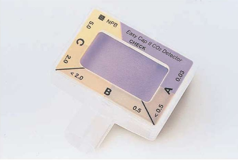Today’s Morning Report is courtesy of Dr. DiMare!
Color Change Capnography
How does it work?
- pH based
- REVERSIBLY reacts with expired CO2
- purple with ETCO2 < 3mmHg
- yellow with ETCO2> 15mmHg
How good is it?
– nearly 100% specific (97-100% different studies, different devices)
- WHEN USED PROPERLY
– sensitivity varies greatly with patient condition (20-100%)
False Positives & Solutions
– copious bagging has forced CO2 into esophagus/stomach
- observe color change back and forth 6 times
– ETT is in hypopharynx
- Capnography should only be used IN CONJUNCTION WITH visualization
– Gastric contents, mucous, medication such as epinephrine and lidocaine
- Will cause a permanent change, must observe back and forth color change
False Negatives
– Cardiac arrest
- Patient is not generating enough CO2 to cause color change
– Massive PE
- Gas exchange is limited
– Large dose IV epi, such as during cardiac arrest
- Theoretically can decrease ETCO2
- Unclear when/if it will decrease it enough to prevent color change
References:
Srinivasa V, Kodali BS. Caution when using colorimetry to confirm endotracheal intubation. Anesth Analg 2007;104:738
Nagler, Joshua, and Baruch Krauss. “Capnography: a valuable tool for airway management.” Emergency medicine clinics of North America 26.4 (2008): 881-897.
Jay Khadpe MD
Latest posts by Jay Khadpe MD (see all)
- Morning Report: 7/30/2015 - July 30, 2015
- Morning Report: 7/28/2015 - July 28, 2015
- IN THE STRETCHER INSTEAD OF BESIDE IT - July 22, 2015
- Morning Report: 7/14/2015 - July 14, 2015
- Morning Report: 7/10/2015 - July 10, 2015
